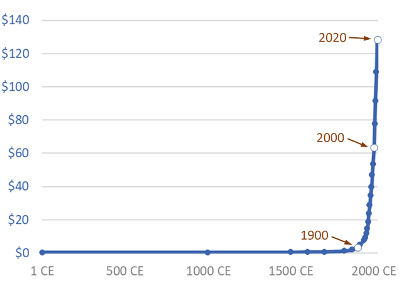This interesting and well remarked Scientific American article ‘The Delusion of Infinite Economic Growth‘ reminds us that there are physical limits to growth, whatever more “sustainable” technologies are implemented. Any technology that scales find its physical limits.

“Every stage of the life cycle of any manufactured product exacts environmental costs: habitat destruction, biodiversity loss and pollution (including carbon emissions) from extraction of raw materials, manufacturing / construction, through to disposal. Thus, it is the increasing global material footprint that is fundamentally the reason for the twin climate and ecological crises.”
While “Technological innovation and efficiency improvements are often cited as pathways to decouple growth in material use from economic growth. While technology undoubtedly has a crucial role to play in the transition to a sustainable world, it is constrained by fundamental physical principles and pragmatic economic considerations.”
In addition, economic growth is exponential and not linear: “unfortunately, the situation is even more dire. Economic growth is required to be exponential; that is, the size of the economy must double in a fixed period.” Thus, “the inescapable inference is that it is essentially impossible to decouple material use from economic growth.” As a result, more is required today than to develop ‘sustainable’ solutions: solutions to the future raw material crises also need to be investigated.
Even sustainable growth will find its limits – as the economy and technologies scale, they require increasingly raw material and space, often in an exponential manner. But the world is finite, therefore a change of paradigm may be required.











